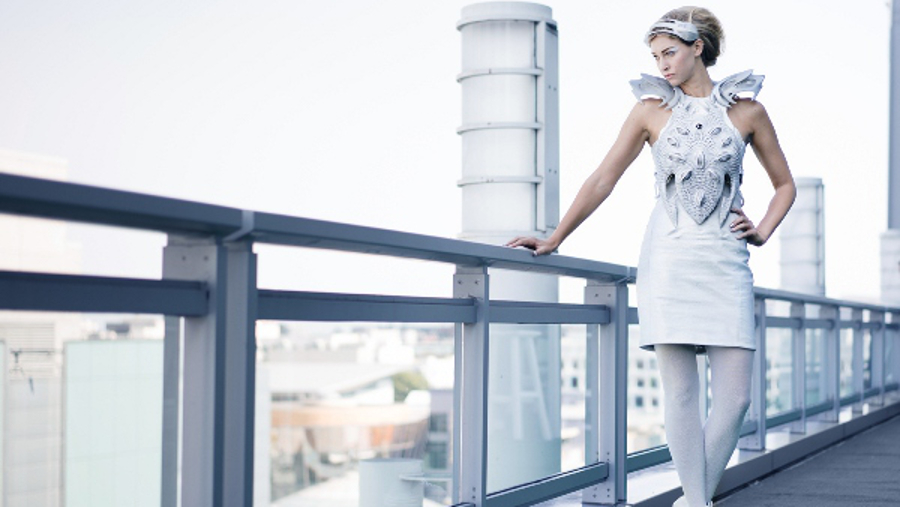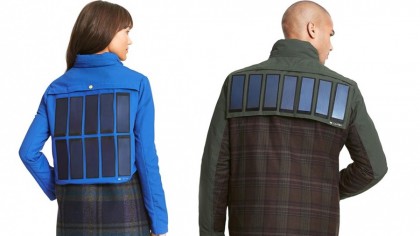Beyond the smartwatch: The future of smart clothing
Cut of the digital cloth

How many pieces of technology do you carry? As technology has proliferated so has the need to safely transport these devices. A whole industry has sprung up around this issue with cases and bags now available for every gadget from smartphones to tablet PCs.
Says Scott Jordan, the founder of SCOTTeVEST: "The many pockets in SCOTTeVEST clothing keeps people's devices organized – including essential spare batteries – but our pockets also make accessing those devices easier, too.
"When that perfect photo opportunity arises, the coolest camera in the world is useless if it's buried at the bottom of a bag with a dozen other devices and batteries. Pockets let people carry and use their devices more efficiently."
As digital devices have become more portable so has the drive to power them and use them with more convenience. Being able to easily carry a device is a fundamental need today, but how can clothing and other accessories enhance that mobility and use?
Power and control mechanism are the two key foundations here – both of which will be met with increasingly sophisticated bags and cases, but we are already seeing the beginnings of electronics becoming integrated into the clothes we wear as well as the bags and cases we carry.
In the past we have had suits and jackets with built-in iPod controllers. Snowboarders have been able to listen to their favourite tunes for several years thanks to integrated controls. Clothing manufacturers including Levis have experimented with 'iPod Jeans' but many of these experiments were a little ahead of their time and failed to take off.

Living with tech
How wearable technologies will integrate into our daily lives is the subject of a recent piece of research from Mindshare which the firm named SHIFT+. James Chandler, Global Mobile Director at Mindshare, oversees Life+, the company's wearable technology unit, and he commented: "I think the concept of affinity is interesting. Products like the Hug Shirt that allows you to share a virtual hug with someone who isn't there physically, or wearing a t-shirt that might change colour to red inside a football stadium to demonstrate your support for a certain team.
Sign up to the TechRadar Pro newsletter to get all the top news, opinion, features and guidance your business needs to succeed!
"The evolution in clothing will I'm sure learn lots of lessons from the disruption Apple is having in the watch industry. It might be a non-fashion brand per se that leads the way in connected clothing or smart fabrics."
Rachel Arthur, Senior Editor of Digital Media and Marketing at WGSN, a global foresight business specialising in consumer, fashion and design trends also commented: "What we'll see will be functional inclusions within our garments. This already exists within the sports category, ideal for health and fitness, but it will evolve to be more suited to everyday consumers and the items they choose to wear."
She continued: "To get to that point, what we need to see is a use case that truly appeals to a broader market base. We need something functional yet seamlessly integrated in our lives. Just being able to track your heart rate through the top you wear, or count your steps via your trainers, or know you've received a text message from the vibrations on your necklace or your ring, isn't going to be hugely relevant for the masses in terms of encouraging them to spend more to buy it."

More integration of the mobile technology we all carry is clearly coming in the future. Simply attaching solar panels to jackets, or weaving controls into fabrics won't be enough to make these garments a mass market product. However, as power becomes more plentiful and easier to generate, clothing in general will begin to have electronics and control systems as standard.
Utility clothing will clearly be the area where this convergence will take place initially with innovations such as Glofaster showing the way. And perhaps additions to our clothing such as the Lumo Lift to get us all to improve our posture could eventually disappear into the very fabric of our clothing. We can already buy gloves with built-in Bluetooth to make calls.